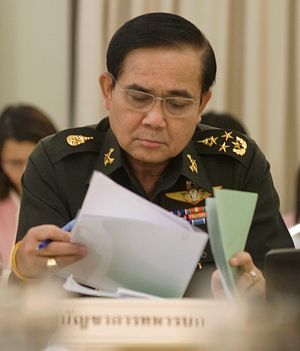Last week, the Thai air force issued its latest white paper. The release of the document highlighted the broader issue of how Thailand is managing its defense capabilities amid wider trends and developments in the Southeast Asian state.
As I have noted before in these pages, over the past decade or so, Thailand has had one of Southeast Asia’s highest levels of defense spending but has generally lagged behind the regional average percentage-wise in terms of government expenditures and GDP. The Thai government has also found it difficult to fund its ongoing modernization efforts due to a range of reasons, including economic underperformance and domestic scrutiny on certain line items.
Last week, Thailand’s defense capabilities were in the headlines again with the Royal Thai Air Force (RTAF) white paper. The RTAF White Paper 2020, released on February 20, set out some key line items that the service intends to focus on in the next decade and beyond.
The document itself touches on a range of areas within Thailand’s defense, including the development of the defense industry and the challenges the country faces. But it also specifies how Thailand plans on both replacing and upgrading existing equipment and also purchasing new platforms as well in the next decade and beyond, including combat, transport, trainer, and VIP aircraft as well as helicopters and fighter jets. Some of the platforms include the replacement of the F-5 Tiger IIs, F-16 Fighting Falcons, and C-130H; additional FA-40 trainer aircraft and an unmanned aerial vehicle; as well as the upgrading of the Saab JAS 39C/D Gripen fleet.
Though some of the details are new, the mixed approach that the service is adopting with respect to new and old equipment is not surprising. As the white paper itself acknowledges, the approach is itself an admission that the RTAF cannot conduct a full set of replacements all at once, and that the focus would be on new equipment that can help it with its main missions including humanitarian assistance and disaster relief and domestic security.
To be sure, some key specifics, including equipment sources and funding numbers, were unsurprisingly left out of the public document, with some of these details not ready to be disclosed as yet. And until we see some of these priorities actually translated into reality, it will be difficult to assess how exactly the white paper is mapping onto the country’s actual defense policy, which is affected by broader factors as well including changes in the country’s politics and the performance of the economy. Nonetheless, this was yet another useful reference point to assess how Thailand is continuing to manage its defense modernization at present and in the future.

































